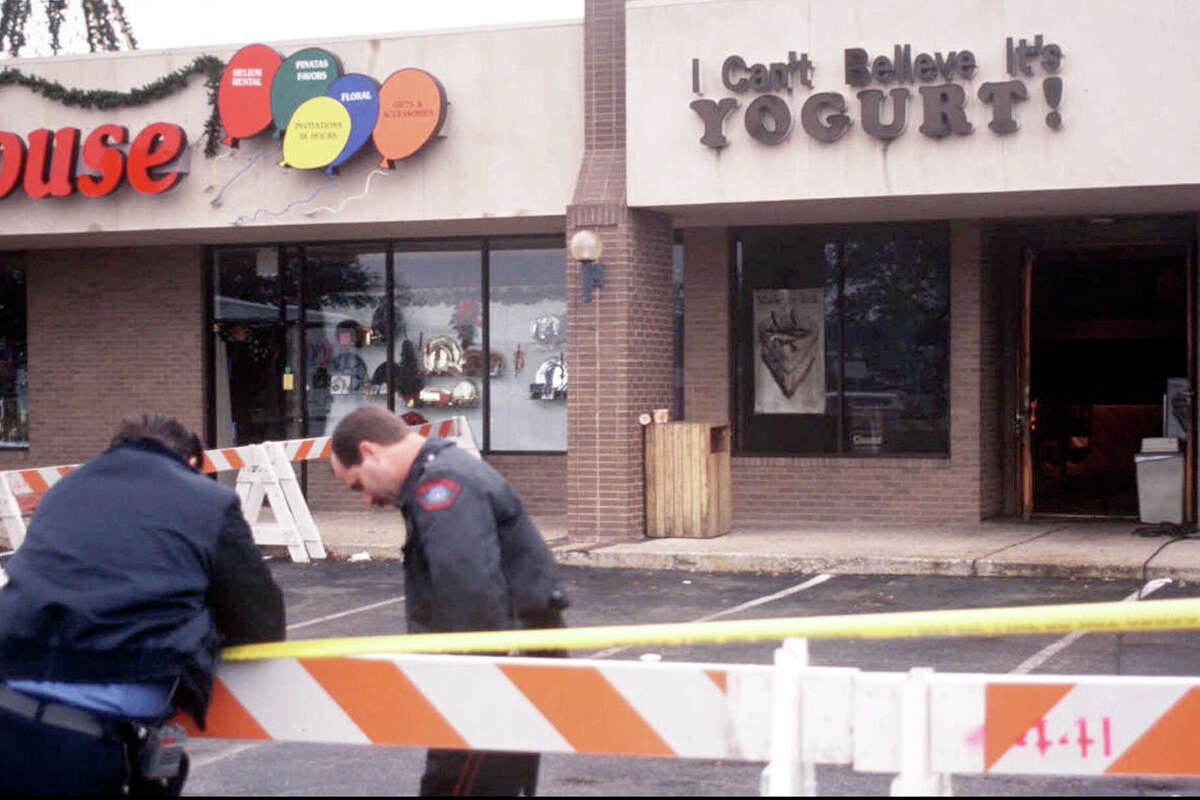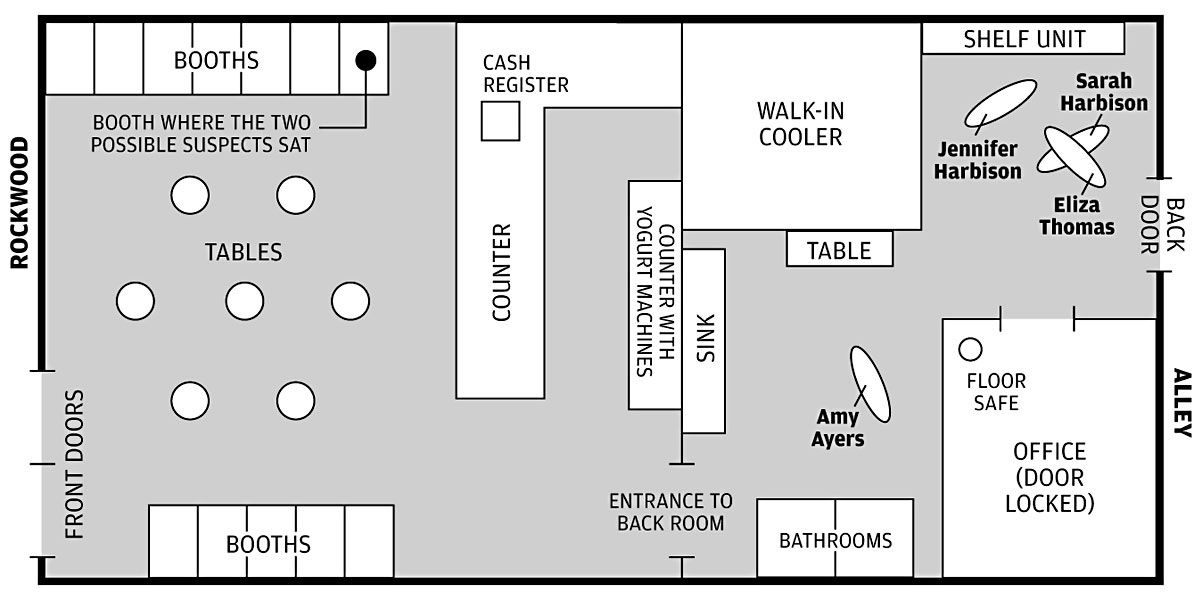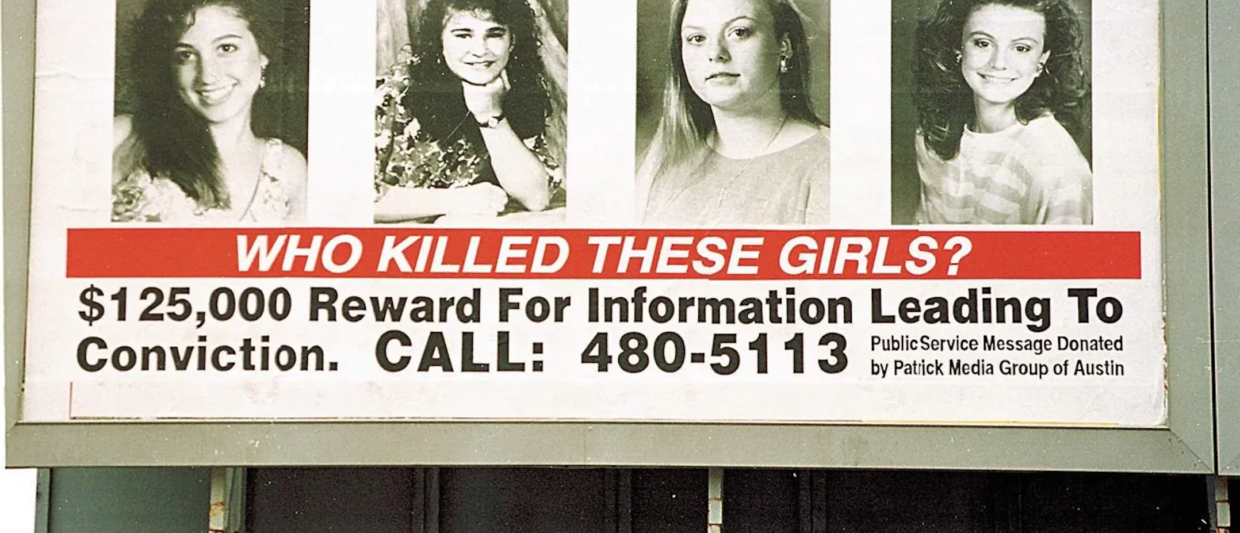Overview of Jennifer Harbison
Jennifer Harbison was an ambitious, trustworthy, and mature 17 year old high school senior at Lanier High School in Austin, Texas.
Jennifer took great interest in the agricultural programs of Future Farmers of America along with her sister, and the siblings visited a local farm twice a week to tend to their lambs. It was at FFA where she truly connected with her friend Eliza Thomas, also a senior at Lanier High School. In addition to participating in the FFA, Jennifer was the head of the Lanier drill team, the Vikettes, as well as a member of the track team. She lived with her younger sister Sarah, aged 15, and their mother, Barbara Suraci.
Jennifer was a hard worker. In order to help make payments on a dark blue Chevy S-10 truck that her father, Michael Harbison, had helped her buy that summer, she took a job at a local frozen yogurt shop. The store, located in a strip mall, was called “I Can’t Believe It’s Yogurt” and was also the workplace of her friend Eliza. Prior to this job, Jennifer had worked at an Albertson’s grocery store.

On December 6, 1991 - the day Jennifer was murdered - she went to school as usual, and then stopped by to see her high school boyfriend, Sammy Buchanan, after school.
The pair hung out for a few hours at his apartment, before Jennifer returned home at around 7:00 pm to get ready for her 8:00 pm work shift at “I Can’t Believe It’s Yogurt.” Before work, Jennifer and her sister picked up Sarah’s friend, Amy Ayers, and dropped the younger girls off at the Northcross Mall which was just down the road from the yogurt shop. The Northcross Mall was in an upper-scale northwestern corner of Austin. Sarah and Amy would spend the evening at the mall together and were planning to have a sleepover at Sarah's house that evening. At 9:00 pm, Jennifer took her break from work and drove to Northcross Mall to pick up Sarah and Amy and bring them back to the yogurt shop, since the mall was closing soon.

That night, Jennifer and Eliza were working the closing shift at the yogurt shop, with Sarah and Amy helping out, as they often did. When the last customer left by 10:42 pm, it was reported that two unidentified males were still in the shop and seemed to have been closely listening to the girls talking. By 11:00 pm the store closed, and the girls locked the door and continued their closing procedures. The policy of the yogurt shop was to lock the doors 15 minutes before closing and to manually let the final customers out of the shop while leaving the key in the lock. It prevented additional people from entering the store and protected the girls while they cleaned up. At 11:03 pm, the “no sale” button was pressed per a receipt still in the register. Sometime between 11:03 pm and 11:47 pm, a terrible crime took place.

At approximately 11:49 pm, Officer Troy Gay arrived at the yogurt shop to investigate a fire on the premises after noticing smoke pouring out and reporting it to dispatch a few minutes earlier.
Upon entering the yogurt shop, he and other Austin PD investigators and fire department personnel discovered the burned bodies of the four girls. Investigators would later discover that $540 dollars was missing from the register. Jennifer’s body would be found adjacent to her sister, Sarah, and her friend Eliza, who were stacked on top of each other. All three girls were found naked and bound. It is believed that when the fire was set, Sarah, Eliza, and Jennifer were all stacked on top of each other, and an accelerant was used to ignite the bodies. However, while firefighters were putting out the blaze, Jennifer’s body was knocked over. Jennifer’s autopsy would reveal that her body was severely charred and her hands were bound, but no binding was ever recovered from the scene. There was a ligature mark around her neck, and each victim was also shot in the head with a .22 caliber gun. Amy was the last to be found, separate from the other three, and not as badly burned. She was found nude – as were the other girls - but with evidence of sexual assault. She had also been shot twice in the head with two different guns; a .22 caliber and a second, fatal shot with a .380 bullet from a semiautomatic.
Police were quick to determine that more than one perpetrator likely committed the crime. Initially, four men – Michael Scott, Robert Springsteen, Maurice Pierce and Forrest Welborn – were implicated in the crimes. The four, still teenagers at the time of the murders, were initially investigated shortly after the crime, but not pursued due to lack of evidence. A series of investigations in 1999 led to all four being implicated, with two of the men, Scott and Springsteen, confessing to the crimes. They were both tried and convicted of capital murder, with Scott receiving a sentence of life without parole and Springsteen being condemned to death. However, the cases were later overturned and both men were eventually exonerated when it was confirmed that the men’s DNA did not match DNA left at the scene.

Despite multiple false confessions, arrests, convictions, and exonerations over the years, the case remains unsolved.
This case rattled the local Austin community at the time, and continues to do so to this day. Many are hopeful that advances in DNA technology could eventually reveal the identity of the individual(s) responsible for the murders of these girls. This case is the inspiration behind the Homicide Victims’ Families Rights Act, which aims to provide families with a full reinvestigation of a cold case, including forensic testing with today’s standards.


























































